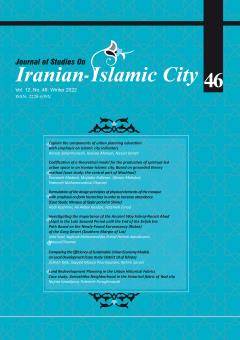Land Redevelopment Planning in the Urban Historical Fabrics Case study: Zartoshtiha Neighborhood in thehistorical fabric of Yazd city
Subject Areas : بافت تاریخی شهرهای تاریخی ایرانnajma esmaeilpoor 1 , Fatemeh Foroughinasab 2
1 - Assistant Professor of Urban Planning Department, Yazd University, Iran.
2 - M.A Student of urban planning, Yazd University, Iran.
Keywords: land redevelopmentplanning, land potential prioritization, Zartoshtiha neighborhood, historical fabric, Global City of Yazd.,
Abstract :
The Inscription of the historical fabric of Yazd in the United Nations Educational, Scientific and Cultural Organization World Heritage Cities, according to the third and fifth UNESCO cultural criteria, was performed in 2017. One of the strategies for the preservationdaily life in the historical fabric is to reuse the previous lands that have been abandoned or the ones under dilapidated buildings that have become non-productive spaces. The researchpurpose is the first, prioritizing the neighborhoods of the historical fabric of Yazd in terms of the potential of these lands for redevelopment; and then presenting the program of improve the efficiency in their use in the area(neighborhood) with the most capability. The Analytic network process, is one of themulti-criteria decision-making methods that have been used to measure the potential of these lands, and the strategic planning process has been used to plan their reuse in the area with the most capabilities. All neighborhoods of the historical fabric of Yazd have a significant share of land worth redevelopment at their central core and outskirts. Zartoshtiha (followers of the religion of Zoroaster) neighborhood showed a greater potential for redevelopment due to its social desirability, economic potential, especially in the field of tourism, and proper access. The article alsooffersthe proposed suitable uses onpotentially redeveloping lands as well as solutions for the prosperity of life in the Zartoshtiha neighborhood. This article is also an example of the application of non-productive land redevelopment planning in historical and ancient fabrics.


